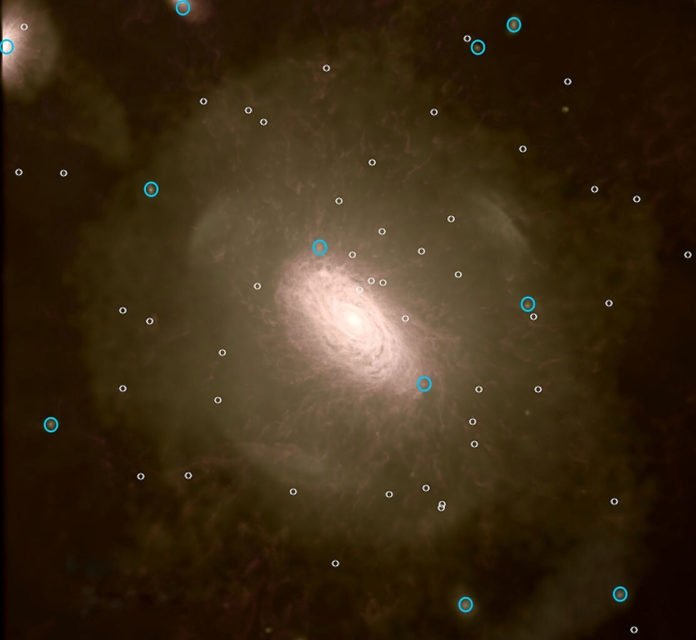The group from the Institute for Computational Cosmology at Durham University and the Harvard-Smithsonian Center for Astrophysics has discovered proof that the faintest satellite galaxies circling our own Milky Way galaxy are among the very first galaxies that formed in our Universe.
Scientists claimed this discovery as hugely exciting. They explained that this finding of some of the Universe’s oldest galaxies orbiting the Milky Way is “equivalent to finding the remains of the first humans that inhabited the Earth.”
Galaxies that named Segue-1, Bootes I, Tucana II and Ursa Major I are in fact some of the first galaxies ever formed. According to scientists, their age must be over 13 billion years old.
Scientists explained, “When the Universe was about 380,000 years old, the very first atoms formed. These were hydrogen atoms, the simplest element in the periodic table. These atoms collected into clouds and began to cool gradually and settle into the small clumps or “halos” of dark matter that emerged from the Big Bang.”
“This cooling phase, known as the “Cosmic dark ages”, lasted about 100 million years. Eventually, the gas that had cooled inside the halos became unstable and began to form stars—these objects are the very first galaxies ever to have formed.”
Scientists observed two populations of the satellite galaxies revolving around the milky way: 1. Consist of galaxies that formed during “cosmic dark ages”. and 2. Consist of galaxies that formed hundreds of millions of years later.
Professor Carlos Frenk, Director of Durham University’s Institute for Computational Cosmology, said: “Finding some of the very first galaxies that formed in our Universe orbiting in the Milky Way’s own backyard is the astronomical equivalent of finding the remains of the first humans that inhabited the Earth. It is hugely exciting.”
“Our finding supports the current model for the evolution of our Universe, the ‘Lambda-cold-dark-matter model’ in which the elementary particles that make up the dark matter drive cosmic evolution.”
Dr. Sownak Bose, who was a Ph.D. student at the ICC when this work began and is now a research fellow at the Harvard-Smithsonian Center for Astrophysics, said: “A nice aspect of this work is that it highlights the complementarity between the predictions of a theoretical model and real data.
“A decade ago, the faintest galaxies in the vicinity of the Milky Way would have gone under the radar. With the increasing sensitivity of present and future galaxy censuses, a whole new trove of the tiniest galaxies has come into the light, allowing us to test theoretical models in new regimes.”
Dr. Alis Deason, who is a Royal Society University Research Fellow at the ICC, Durham University, said: “This is a wonderful example of how observations of the tiniest dwarf galaxies residing in our own Milky Way can be used to learn about the early Universe.”
Their findings are published in the Astrophysical Journal.
